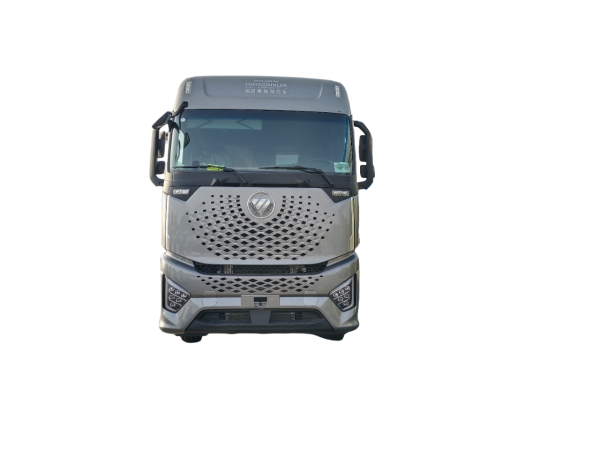Introduction
Truck mounted cranes with booms are a vital piece of equipment in various industries such as construction, logistics, and maintenance. These cranes offer a unique combination of mobility, flexibility, and lifting capacity, making them indispensable for lifting and moving heavy loads in diverse work environments. In this comprehensive guide, we will explore the features, benefits, applications, and maintenance of truck mounted cranes with booms.
Overview of Truck Mounted Cranes with Booms
Truck mounted cranes with booms are specialized vehicles equipped with a crane mounted on a truck chassis. The crane is typically mounted behind the cab of the truck and features a telescopic boom that can be extended and retracted to reach different heights and distances. These cranes are powered by the truck's engine and can be operated by a hydraulic system or other mechanical means.
One of the key advantages of truck mounted cranes with booms is their mobility. Unlike stationary cranes, truck mounted cranes can be easily transported to different job sites, making them ideal for applications that require frequent relocation. Additionally, the boom of the crane can be rotated and positioned in various angles, providing flexibility in lifting and placing loads with precision.
Applications of Truck Mounted Cranes with Booms
Truck mounted cranes with booms find widespread applications across a range of industries due to their versatility and efficiency. Some common applications include:
1. Construction: Truck mounted cranes are commonly used in the construction industry for lifting and placing heavy materials such as steel beams, concrete panels, and machinery. The mobility of these cranes allows construction companies to efficiently move equipment and materials around the job site, improving productivity and reducing labor costs.
2. Logistics and Warehousing: In logistics and warehousing operations, truck mounted cranes are utilized for loading and unloading cargo from trucks and containers. The ability to reach elevated positions makes these cranes ideal for stacking and organizing goods in warehouses, optimizing storage space and streamlining operations.
3. Maintenance and Repair: Truck mounted cranes are essential for maintenance and repair work in industries such as telecommunications, utilities, and infrastructure. These cranes enable technicians to access elevated structures and equipment safely, facilitating repairs and inspections with precision and efficiency.
4. Tree Care and Landscaping: In the arboriculture and landscaping sectors, truck mounted cranes are used for tree removal, pruning, and landscaping tasks. The telescopic boom of the crane allows arborists to reach tall trees and branches with ease, improving safety and productivity in tree care operations.
Benefits of Truck Mounted Cranes with Booms

There are several key benefits associated with the use of truck mounted cranes with booms, including:
1. Mobility: The ability to transport the crane to different locations quickly and easily enhances the efficiency and flexibility of operations in various industries.
2. Versatility: Truck mounted cranes with booms can perform a wide range of lifting and positioning tasks, making them suitable for diverse applications and job requirements.
3. Fuel-efficient work trucks for long-distance travel -Effectiveness: By eliminating the need for separate transportation and setup of a crane, truck mounted cranes help reduce overall project costs and improve profitability.
4. Safety: The precise control and positioning capabilities of truck mounted cranes with booms enhance safety for operators and workers by minimizing risks associated with manual lifting and handling of heavy loads.
5. Productivity: The speed and efficiency of truck mounted cranes enable faster completion of tasks, leading to increased productivity and improved project timelines.
Maintenance of Truck Mounted Cranes with Booms
Proper maintenance is essential to ensure the optimal performance and longevity of truck mounted cranes with booms. Here are some key maintenance practices to follow:
1. Regular Inspections: Conduct routine inspections of the crane's components, including the boom, hydraulic system, controls, and safety devices, to identify and address any signs of wear or damage.
2. Lubrication: Keep the moving parts of the crane well-lubricated to prevent friction and ensure smooth operation. Follow the manufacturer's recommendations for the type and frequency of lubrication required.
3. Hydraulic System Checks: Inspect the hydraulic system regularly for leaks, fluid levels, and pressure levels. Replace hydraulic fluids as needed and address any issues promptly to prevent system failures.
4. Structural Integrity: Check the structural integrity of the crane, including the boom, outriggers, and chassis, for signs of corrosion, cracks, or deformation. Ensure that all structural components are in good condition to support safe lifting operations.
5. Operator Training: Provide comprehensive training for crane operators on safe operating practices, proper load handling techniques, and emergency procedures. Regularly review and update operator certifications to ensure compliance with industry standards.
Conclusion
Truck mounted cranes with booms are indispensable equipment in various industries for lifting, positioning, and moving heavy loads with precision and efficiency. Their mobility, versatility, and lifting capacity make them a valuable asset for construction, logistics, maintenance, and other applications. By following proper maintenance practices and ensuring operator training, organizations can maximize the performance and longevity of truck mounted cranes with booms, enhancing safety and productivity in the workplace.
